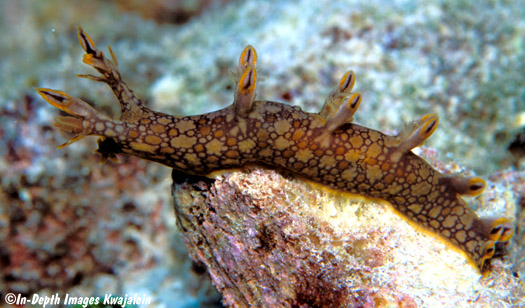
Bornella anguilla was originally described from specimens found at Kwajalein and Enewetak Atolls, although it has been found throughout much of the Indo Pacific since, from Hawaii to east Africa. In the Marshalls, it is primarily a nocturnal species, coming out of caves and ledges at night on the seaward reef slope as well as lagoon pinnacles around deepwater passes. Most of the Marshall Islands specimens were found at depths of 8 to 15 meters, often feeding on a hydroid in the genus Plumularia. We have seen specimens ranging from 25 to 70mm in length. This species swims like no other known species of nudibranch. Many species, including other Bornella, can laterally bend their entire body back and forth and rise up off the bottom where surge or current might carry them some distance. But Bornella anguilla slithers along like an eel or a blenny, making very good headway in a particular direction. In fact, the specific name of anguilla is a reference to the eel-like swimming behavior. The paper containing the original description is here. Bornella anguilla was first reported in the Marshalls from Kwajalein and Enewetak Atolls by Johnson (1984).

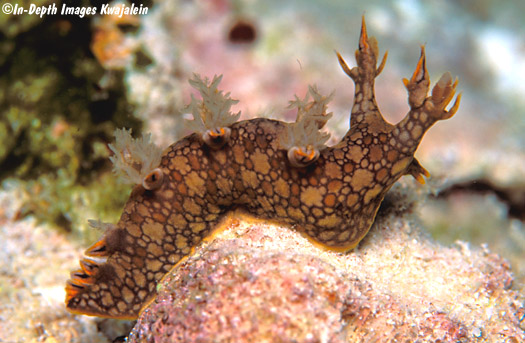
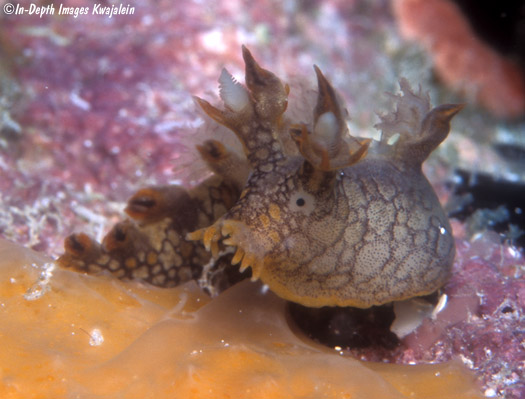
In the Marshalls, only younger and smaller individuals lack the dull greenish tint seen in most of the larger ones.
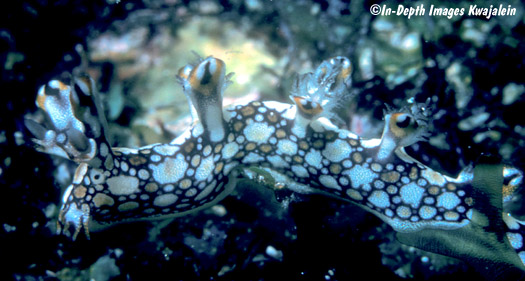
On the left side of the photo, right in front of the rhinophoral processes, you can see one of the black eyes of this species. The gills extend from the inner surfaces of the dorsal lateral processes, which themselves are flattened into paddle-like shapes and are held upright for more push when the animal is swimming.
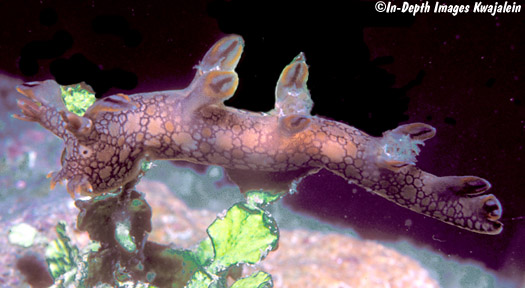
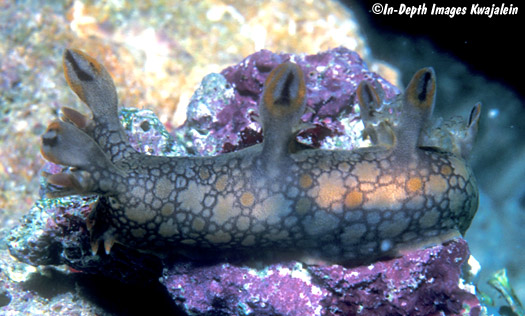
The smallest individual we have seen was on a Kwajalein lagoon pinnacle under a large rock on 16 September 2013.
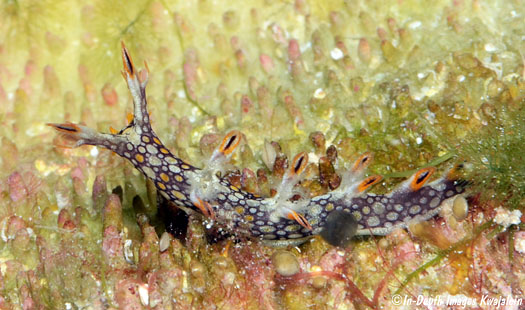
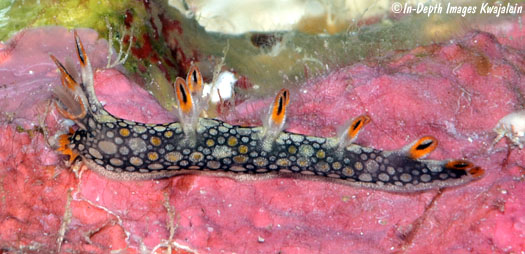
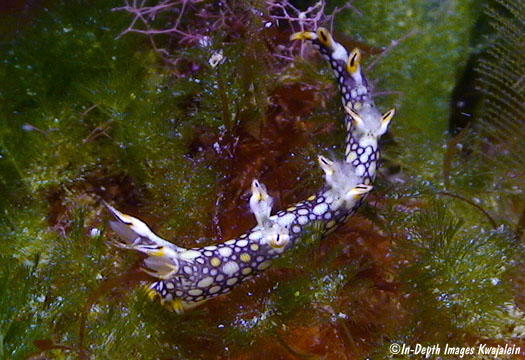
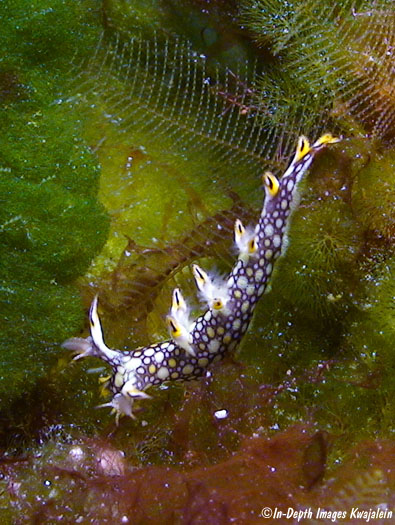
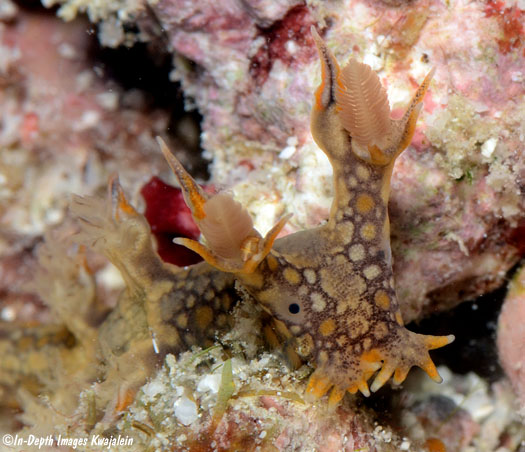
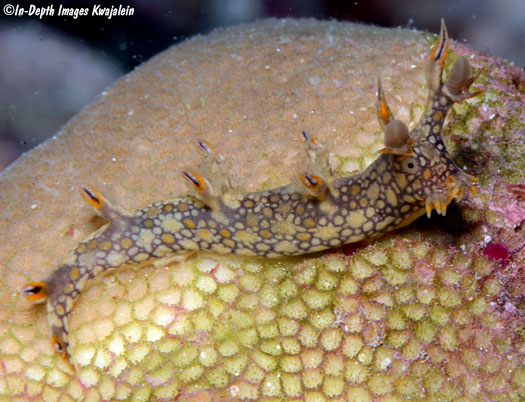
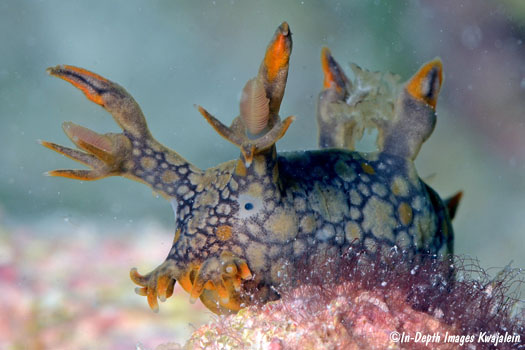
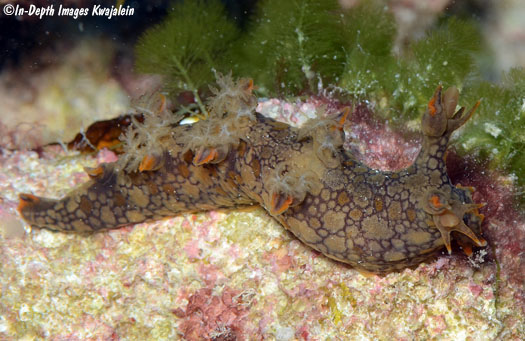
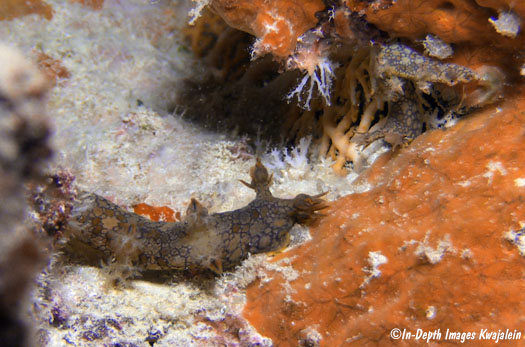
The specimen below was on the seaward reef at night on 1 January 2017.
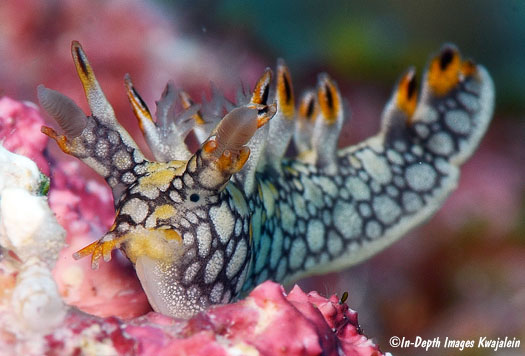
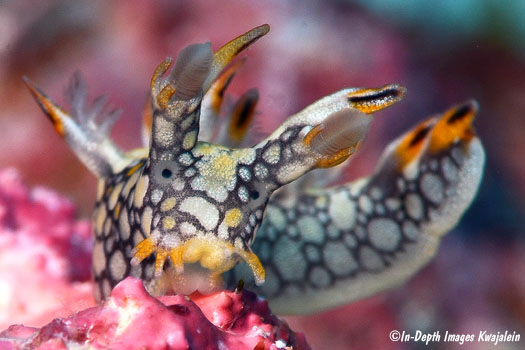
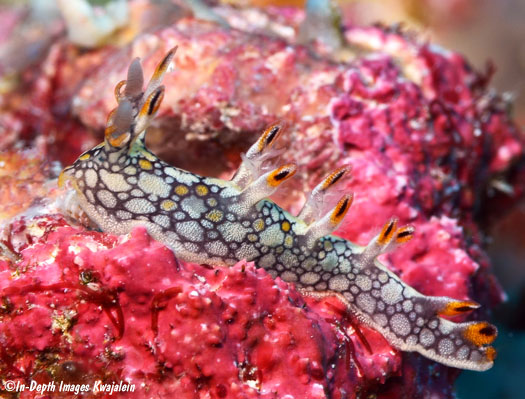
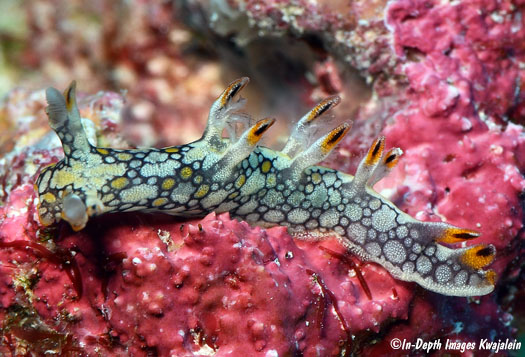
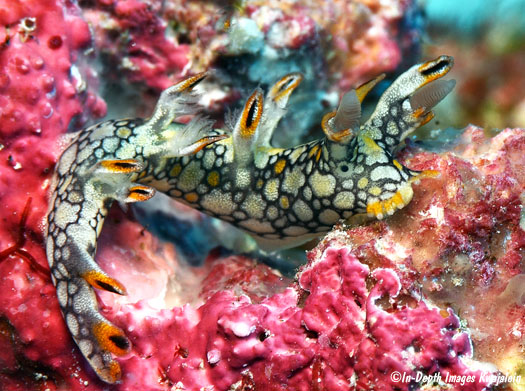
Created 20 January 2007
Updated 18 March 2021